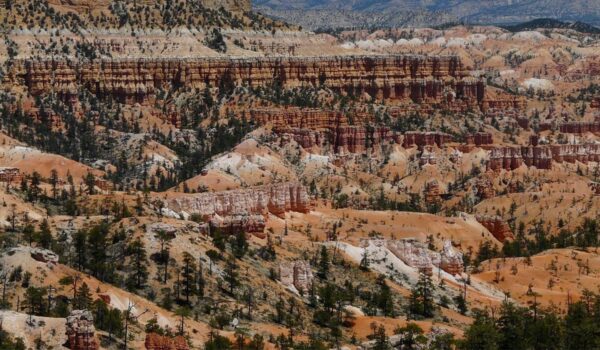Red Rocks Park is a stunningly beautiful place that is a must-see for anyone in or near Denver. The park encompasses more than 868 acres, which is home not only to a theater with natural acoustics, as many believe, but also to breathtaking natural wonders. As you stroll through Red Rocks Park, you can see picturesque landscapes that are an extraordinary combination of evergreen pine forests and endless silent prairies, observe unique geological features of the area, or encounter the noble deer that inhabit the area. Red Rocks Park is a special area created at the intersection of the Great Plains and the Rocky Mountains, so you can see flora and fauna from two different regions in a backdrop of unique landscapes.
The legendary amphitheater, called the Red Rocks for its appearance, is a mountain range located near Morrison, 10 miles west of Denver, Colorado. The unique natural amphitheater was formed at the intersection of several cliffs. Behind the stage of the amphitheater can be seen a steep cliff that is shaped like a disc. On the right side of the stage is another steep cliff with an outside slope. Along the left side of the stage is a group of exposed rocks.
The Red Rocks amphitheater stands out for its unique acoustics, thanks to the special location of the rocks, which were noticed by the Indian tribes who lived in the area. Thanks to the amazing distribution of sound along the amphitheater’s perimeter, the natural creation eventually turned into a popular arena for organizing different kinds of events, which is successfully used until now.
The capacity of the theater reaches 9,450 people. The audience seats are located in long rows between the rocks. The only natural amphitheater in the world deserved its legendary fame thanks to the world stars, who performed on its unusual stage several times. The Red Rocks have hosted concerts by world-famous artists like Sting, the Beatles, U2, and popular opera singers.
GalleryGalleryGalleryGalleryGalleryGallery
The geological features of the Red Rocks amphitheater
The rocks that represent the walls of the amphitheater hold traces of centuries of history, impressing not only ordinary travelers, but also experienced scientists who have spent years studying the natural creation. The cliffs were formed as a result of the movement of land masses, which entailed the gradual lifting of sandstone from the ocean floor.
Studying the rocks, scientists found traces of dinosaurs that lived during the Jurassic period 160 million years ago. It’s hard to even believe that the remains of enormous plesiosaurs, giant 40-pound sea snakes, flying reptiles and marine mosasaurs have been found in the rocks, which you can personally touch when visiting the national park.
History of the theater’s origins
Originally, the amphitheater stage, formed thousands of years ago by various natural phenomena, was used by the Utah Indians who lived in that area and held various events and sacred rituals there. Then John Brisber Wacker noticed more than a hundred years ago that the amphitheater, surrounded by bizarrely huge rocks, had excellent acoustics. Then he began to dream of having famous artists perform concerts on the amazing stage. Between 1906 and 1910, Wacker organized several concerts at the Red Rocks Amphitheater. It was with the dream of John Wacker, who can be considered the founder of the amphitheater in its modern form, that the Red Stones began their legendary history.
The huge stones that surround the amphitheater have the origin of a fountain formation, so the place changed several names before it began to be called what it is today. Between 1870 and 1906, the amphitheater was called the Garden of the Angels. At the time when Wacker was organizing concerts from 1906 to 1928, the place was called the Garden of the Titans. Despite the different names, the amphitheater was always popularly referred to as the Red Stones Theater. None of the other proposed names became popular and recognizable, so in 1928 it was decided to change the name.
In 1928, the amphitheater became the property of Denver and received the official name Red Rocks, which is still in use today. From that time on, the city administration set out to design a real theater in which high-level events could be organized and held. The project was headed by Burnham Hoyt, an architect well known in the city of Denver. The official name, which later became world famous, was given not only to the amphitheater itself, but also to each of the rocks surrounding the arena. The wall to the north is called the Rock of Universe. The wall that is at the southern end of the amphitheater is called the Rock of Ship. The rock that adjoins the amphitheater from the east is called Rock of Scene.
